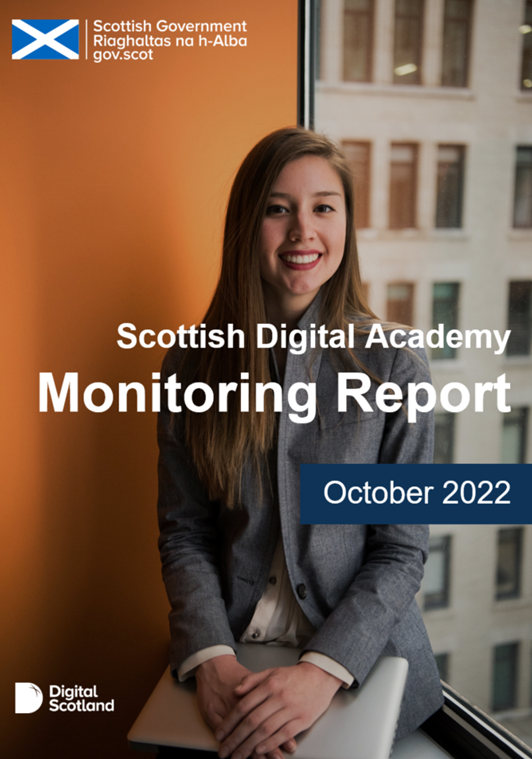So, what do you do?
We’re standardising job descriptions across the profession to improve consistency and how we communicate what we do when we’re recruiting.
Blog article by Yorath Turner, Deputy Director Digital - People, Strategy and Corporate Services
So, what do you do?
You’ve probably been asked that hundreds of times before. And, whilst it’s easy to explain to someone what your role and responsibilities are in the moment, you’re never quite sure if they really understand it all completely.
As a profession we have a wide range of roles which make up DDaT (Digital, Data and Technology), everything from Applications Operations Engineers to User Researchers – you name it and we do it!
With such a wide variety of roles we naturally see variations on how jobs and roles are described, for the most part that doesn’t cause problems. However, as we’ve grown as a profession these variations have also grown. This has led to some inconsistencies in how roles are described and what they’re expected to do (and deliver).
The Digital, Data and Technology Profession Capability Framework and Cyber security and information assurance career pathway are purposely generic and light on detail to allow departments to adapt from a base level of role description, focusing instead on the consistent application of core capabilities needed for each role. When we’re recruiting to roles we need to develop a full job description each time, which is both time consuming (for hiring managers as well as the approvers) and inefficient.
As part of the Digital Programme (a new area of work that will improve the way the Scottish Government ‘does digital’) and the Digital Scotland Service Manual, we’ve mapped out the need to develop detailed job descriptions for roles across the profession at every level. That’s no quick or easy task but our research shows that it can deliver some major benefits for us.
With more consistent and repeatable job descriptions we will:
- Communicate clearly and effectively what are roles are when we recruit
- Save time and effort for hiring managers with readymade full descriptions which are already pre-approved as profession roles
- Provide consistency of expectations for people at every level, and clear articulation of what is expected at more senior levels to help with career planning
- D&I benefits
So what’s the plan?
The first iteration of the design process has been completed and is now going into test. The team are working with Subject Matter Experts across the profession to develop templates which include:
- What the role is for
- The main duties (i.e. what the role does on a day-to-day basis)
- DDaT skills and levels needed for the roles
- Essential criteria
These are being developed for each level from Associate to Head of functions. Over the coming months we will be running design sprints with regular retrospectives to review and improve.
We’ll also be testing the developed descriptions with communities of practice and as part of recruitment activity.
Current plans (although subject to change and backlog refinement) are shown below. We’re prioritising based on our workforce plans for recruitment. We will continue to review and prioritise to add roles and will update on our progress regularly via the DDaT Profession newsletter.
| Release | Role | Planned Delivery Date |
| Release 0 | Content design | Testing |
| Release 1 | Service designer | End August 2023 |
| Service Owner | End August 2023 | |
| Technical architect | End August 2023 | |
| User researcher | End August 2023 | |
| Release 2 | Business analyst | Mid-September 2023 |
| Data analyst | Mid-September 2023 | |
| Data engineer | Mid-September 2023 | |
| Delivery manager | Mid-September 2023 | |
| Infrastructure engineer | Mid-September 2023 | |
| IT service manager | Mid-September 2023 | |
| Software developer | Mid-September 2023 | |
| Release 3 | Product manager | End September 2023 |
| Security and information risk | End September 2023 | |
| Service desk manager | End September 2023 | |
| Release 4 | Cyber security engineer | Mid-October 2023 |
| Data architect | Mid-October 2023 | |
| Data scientist | Mid-October 2023 | |
| End user computing engineer | Mid-October 2023 | |
| Security architect | Mid-October 2023 |
Table 1: illustration of expected timeline (subject to change)
Once developed and agreed, the role descriptions will be loaded onto our job approval platform. We also plan to make them available via the Digital Support Hub for easy access by anyone.
You’ll still be able to add the local context about the project or programme of work but we expect there will be limited occasions where any of the standard titles, duties, or skills will need to be changed, removed, or have new ones added.
Will I be asked to move to a new job description?
We’re not expecting any existing job descriptions to have to be re-mapped or re-aligned, we know that people are busy getting on with the day job and are doing it well. Existing approvals remain in place until a post becomes vacant.
As positions become vacant we will be asking recruiting managers to adopt the new job descriptions and remove older versions from the structures.
If you would like to move to a revised standardised job description we would be happy to review this with you so please get in touch.
Recent posts
-
Digital, Data and Technology jobs in Scotland
We are looking for people with the talent, skills and ambition to join our Digital, Data and Technology (DDaT) professions, to help us shape the future of digital delivery and transform our nation.
-
Monitoring Report 2022
We have now published our Monitoring Report, which provides an account of our activity to determine the extent to which we have achieved our objectives.
-
Reflecting back and looking forward
Lee Dunn, Head of the Scottish Digital Academy looks back at 2022 and considers the next steps in developing digital skills, capability and talent in Scotland, by evolving the offer of professional learning and support available from the Scottish Government.



